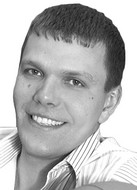Jumper technique preparatory phase excelling model for academic basketball
Фотографии:
ˑ:
Teoriya i praktika fizicheskoy kultury №3 2018, pp.77-82
PhD, Associate Professor A.A. Ilyin1
Dr.Med., Professor L.V. Kapilevich2, 3
1Tomsk State University of Control Systems and Radioelectronics
2National Research Tomsk State University, Tomsk
3National Research Tomsk Polytechnic University, Tomsk
It is a common knowledge that the preparatory phase in a jumper technique largely predetermines success of the throw due to the bodily elements being duly arranged as required by the relevant biomechanical movement regularities and bioelectric activity patterns of the trunk and lower limb muscles. An educational process experiment under the study was designed to rate benefits of the proposed jumper technique preparatory phase excelling model. Subject to the study were an Experimental Group (EG, n=12) and Reference Group (RG, n=12) composed of 18-20 year-old university students. The experiment took 6 months (October through March), with training sessions in both groups scheduled 4 times a week. The EG training system was designed to include special preparatory phase exercises to train jumpers with both feet oriented towards the hoop. Every athlete was subject to pre- and post-experimental tests to rate the special fitness, jumping ability and ball control skills in the jumper sequence. The special exercises to improve jumper technique preparatory phase with an emphasis on the feet placement were found beneficial as verified by the notable progress of the EG versus RG in the aerial offensive skills.
Keywords: basketball, technical training, preparatory phase, electromyography.
References
- Andreev V.I. Faktory, opredelyayuschie effektivnost tekhnicheskikh priemov napadeniya v bezopornom polozhenii v igrovykh vidakh sporta [Factors to determine efficiency of unsupported technical attacks in team sports]. Tomsk: TU publ., 2000. 176 p.
- Andreev V.I., Pliev S.Z., Kapilevich L.V. et al Biomekhanicheskie osnovyi pravilnoy i oshibochnoy tekhniki lovli myacha basketbolistami razlichnoy kvalifikatsii [Biomechanical bases of correct and wrong technique of ball catching in basketballers of different qualifications]. Teoriya i praktika fiz. kultury, 2011, no. 10, pp. 80-84.
- Portnov Yu.M. Osnovy upravleniya trenirovochno-sorevnovatelnym protsessom v sportivnykh igrakh [Fundamentals of management of training and competitive process in sports]. Moscow, 1996, 200 p.
- Kapilevich L.V. Fiziologicheskie mekhanizmy koordinatsii dvizheniy v bezopornom polozhenii u sportsmenov [Physiological mechanisms of motor coordination in athletes in unsupported position]. Teoriya i praktika fiz. kultury, 2012, 7, pp. 45-48
- Illarionova, A.V., Kapilevich, L.V. Osovennosti vnutrimyshechnoy i mezhmyshechnoy koordinatsii pri dosirovanii ulisiy v usloviyakh neustoychivogo ravnovesiya [Distinctive features of intramuscular and intermuscular coordination at power graduation in the context of balance training]. Teoriya i Praktika Fizicheskoy Kultury, 2014, 12, pp.44-46



 Журнал "THEORY AND PRACTICE
Журнал "THEORY AND PRACTICE